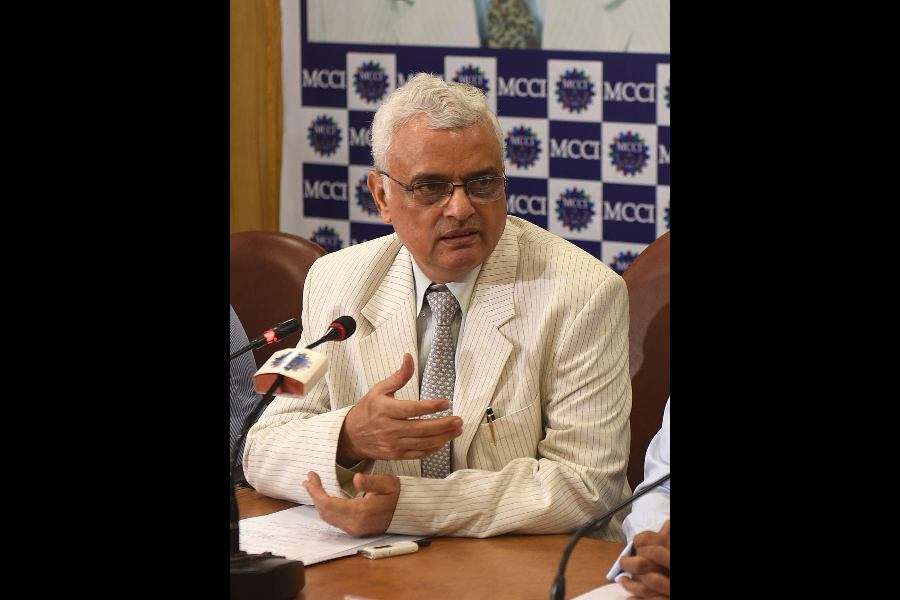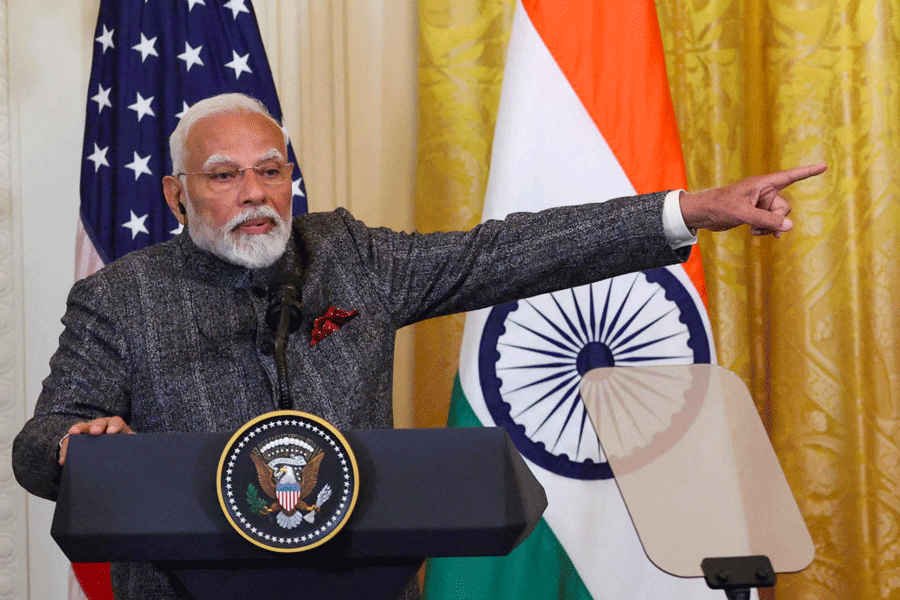
Dum Dum: Calcutta airport has an inline baggage screening system but not where it is needed the most: the much busier domestic wing.
Inline baggage X-ray, a facility that privatised airports have had for years, was to arrive in the domestic section by this November. But officials said the date had been postponed again.
"The system could become operational only around March next year," a source in the Airports Authority of India (AAI) said.
Compared to Delhi, Mumbai, Bangalore and Hyderabad airports, passengers using the domestic section in Calcutta spend an extra 20 minutes on an average standing in a queue to get their check-in baggage scanned.
The queues have lengthened with domestic passenger traffic surging almost 26 per cent in 2016-17 over the previous year.
An official of a private airline said complaints were being lodged by passengers every day about their having to queue up for baggage scanning. "Most of these complainants are from cities like Mumbai and Delhi. They find it strange that people have to stand in line for baggage X-ray in a metro airport."
The international wing got an inline screening system in 2016, more than three years since the integrated terminal became operational. In-flight internal surveys by international airlines have shown passenger ratings for amenities rising sharply after inline baggage screening started. But since growth in international passenger traffic out of the city has been stunted, not many people benefit from the facility in one section of the terminal.
Almost four years have passed since the integrated terminal opened, but bureaucratic red tape has ensured that people taking domestic flights out of this city are denied one of the basic amenities that a modern airport is expected to have.
The AAI had decided to procure inline screening equipment for five X-ray conveyor belts in the domestic section together with some for Chennai airport. "But we found that placing an order for screening equipment for two airports would not be cost-effective; so the process was delayed," an AAI official said from Delhi.
An order was placed recently for more than 80 scanners for several state-run airports, including the smaller ones.
Not only does an inline baggage screening system save passengers time, it also reduces manpower costs for airlines. An inline system also ensures better security. The cameras installed in the conveyor belts provide multi-dimensional images that the old standalone X-ray machines don't provide. Several layers of checking are done by the software as well as security personnel in the control room.
The manual baggage X-ray system depends entirely on the personnel handling it to spot a security breach.
Private airports like Mumbai and Delhi have had their inline screening systems since the new terminal buildings became operational. "We had planned our infrastructure much before the terminal became operational. Inline screening means passengers don't have to stand in an extra queue," said an official of Mumbai International Airport Ltd.










